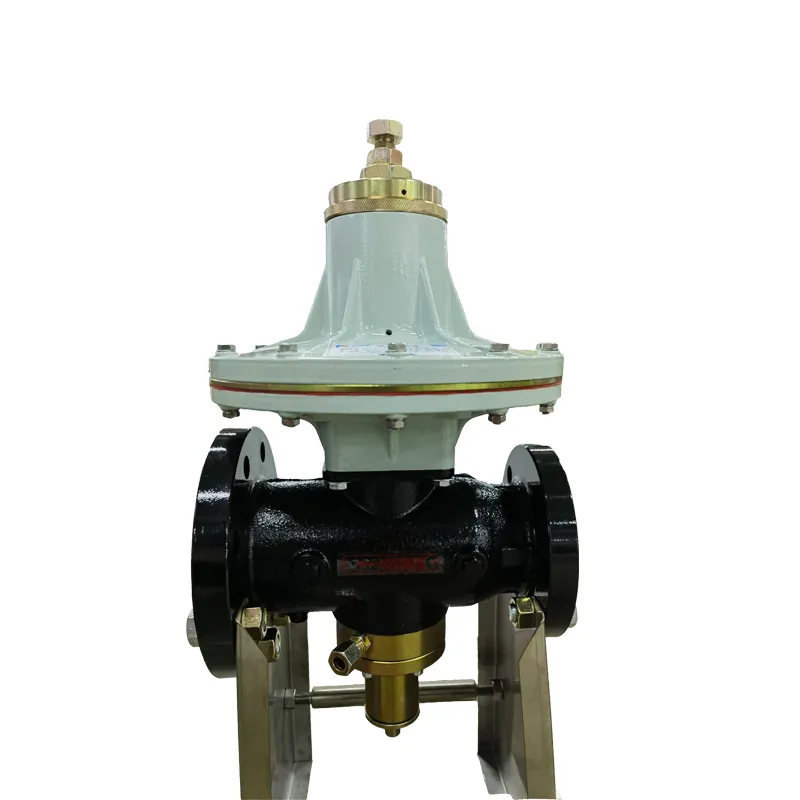
Dec . 04, 2024 16:32
Back to list
منظم ضغط الغاز الطبيعي
Natural Gas Pressure Regulators Ensuring Safe and Efficient Gas Distribution
Natural gas, a vital energy resource used in homes, industries, and power generation, must be managed with precision and safety in mind. One of the key components in the distribution of natural gas is the pressure regulator. This article will delve into the importance, functionality, and types of natural gas pressure regulators, underscoring how they ensure the safe and efficient transport of this essential fuel.
The Role of Pressure Regulators
Pressure regulators serve as critical devices in the natural gas distribution system. Their primary function is to maintain a consistent output pressure, regardless of the fluctuations in input pressure from the supply line. This is essential because natural gas is delivered from high-pressure pipelines, and if it were to enter residential or commercial systems at such high pressures, it would pose significant safety hazards, including the risk of leaks, explosions, and equipment damage.
By reducing and controlling the pressure of natural gas to a safe level, regulators protect both the infrastructure and the users. They are designed to respond automatically to changes in pressure, ensuring that the gas supplied remains within safe operational limits.
How Pressure Regulators Work
The basic operation of a pressure regulator revolves around a diaphragm and a spring mechanism. When gas enters the regulator, it acts upon a diaphragm that is connected to a spring. When the pressure exceeds the set limit, the diaphragm moves and compresses the spring, which in turn reduces the flow of gas, bringing the pressure down to the desired level. Conversely, if the pressure drops below the set point, the spring releases, allowing more gas to flow through.
This dynamic balance is crucial for maintaining stable pressures. In more advanced regulators, additional features such as internal relief mechanisms and bypass valves are included to enhance safety and efficiency. These features ensure that in the event of a malfunction or sudden pressure spike, the regulator can safely divert excess gas and prevent accidents.
.
There are several types of pressure regulators used in natural gas systems, each designed for specific applications
منظم ضغط الغاز الطبيعي

1. Service Regulators These are commonly found in residential and commercial installations. They regulate the pressure of natural gas from the main supply line to the appropriate level for use in appliances.
2. Industrial Regulators Used in manufacturing and processing facilities, these regulators handle larger volumes of gas and can deal with higher pressures, ensuring that industrial operations run smoothly.
3. Line Regulators Typically installed in gas distribution networks, these regulators maintain consistent pressure levels along the pipeline system, compensating for variations in gas use.
4. Back Pressure Regulators These devices are employed to maintain a pressure above a specific value in a system while allowing excess gas to escape or divert to maintain safety and efficiency.
Importance of Maintenance and Safety Standards
Proper maintenance of pressure regulators is essential to ensure their functionality and longevity. Regular inspections are critical for identifying wear or potential issues that could impair the regulator’s performance. Additionally, following safety standards and regulations set by local and national authorities helps to minimize risks associated with gas distribution.
Technological advancements have also contributed to the development of smart regulators equipped with sensors and remote monitoring capabilities. These innovations allow for real-time assessments of pressure levels and system integrity, further enhancing safety and efficiency in natural gas distribution.
Conclusion
Natural gas pressure regulators play a pivotal role in the safe and efficient distribution of natural gas to consumers. By managing pressure levels, these devices not only protect infrastructure but also ensure that end-users have safe access to this crucial energy source. As the demand for natural gas continues to grow, the importance of reliable and efficient pressure regulation systems cannot be overstated. Investing in high-quality regulators and maintaining them diligently is essential for safeguarding lives, property, and the environment.
Next:
Latest news
-
Safety Valve Spring-Loaded Design Overpressure ProtectionNewsJul.25,2025
-
Precision Voltage Regulator AC5 Accuracy Grade PerformanceNewsJul.25,2025
-
Natural Gas Pressure Regulating Skid Industrial Pipeline ApplicationsNewsJul.25,2025
-
Natural Gas Filter Stainless Steel Mesh Element DesignNewsJul.25,2025
-
Gas Pressure Regulator Valve Direct-Acting Spring-Loaded DesignNewsJul.25,2025
-
Decompression Equipment Multi-Stage Heat Exchange System DesignNewsJul.25,2025

